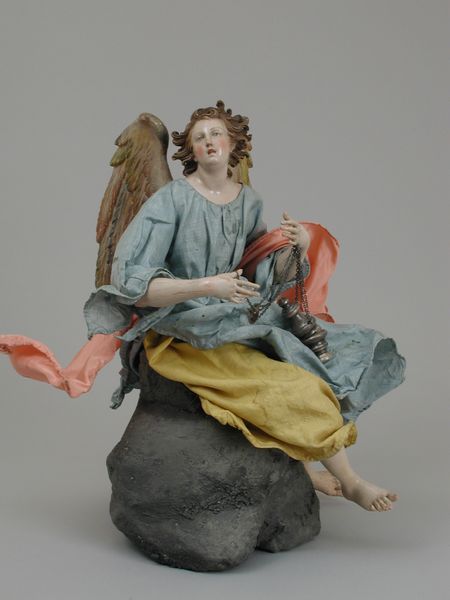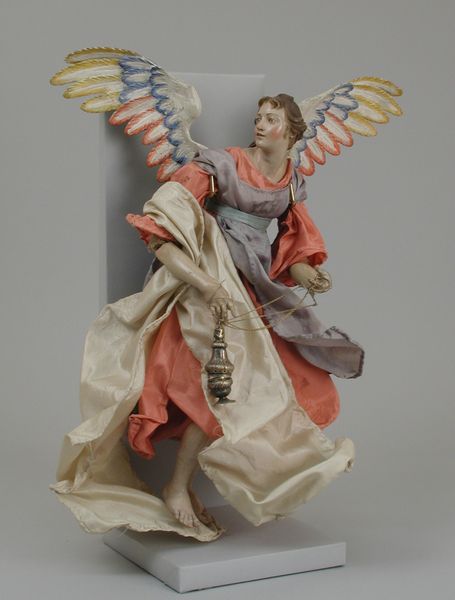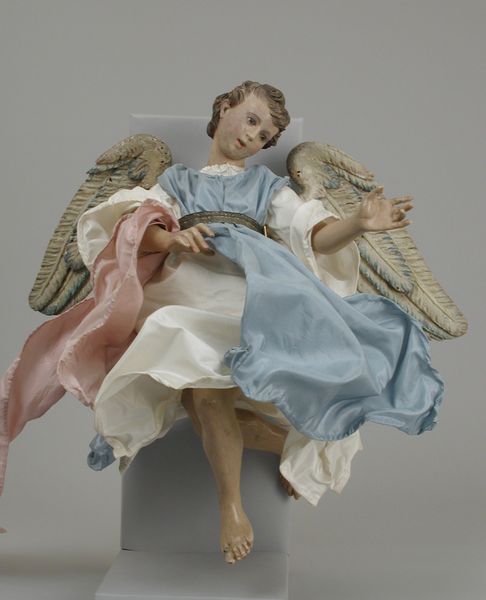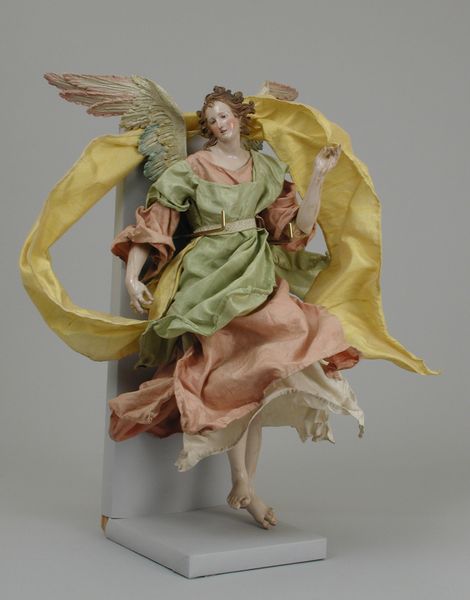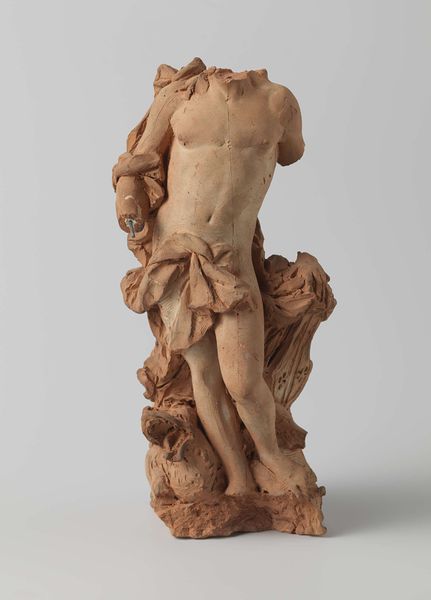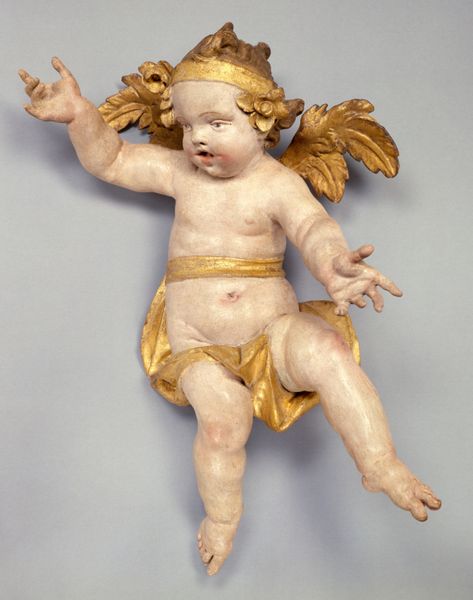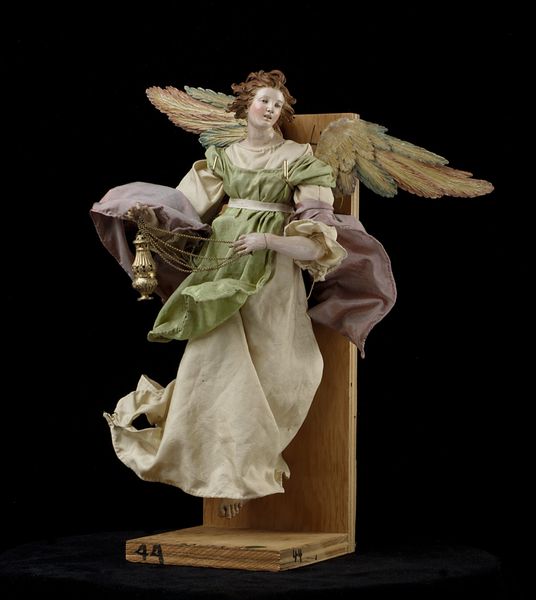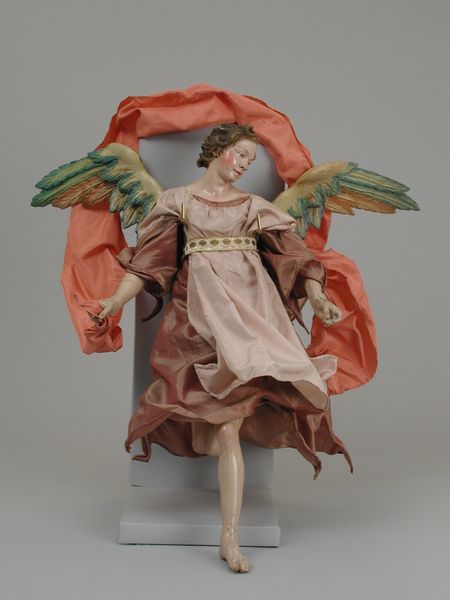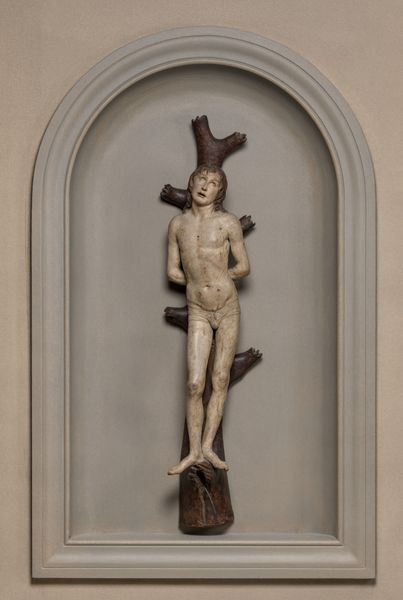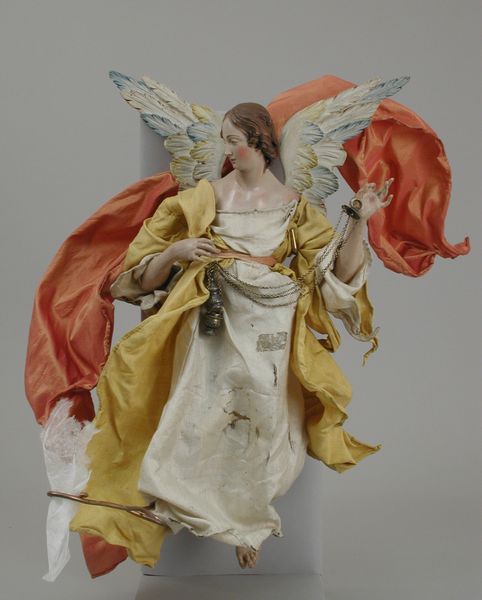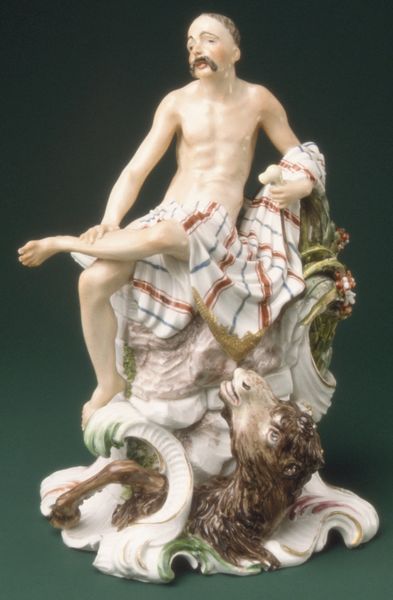
Dimensions: Gr. H. 13 1/4 in. (33.7 cm.)
Copyright: Public Domain
Editor: Here we have an 18th or 19th-century wooden sculpture of an angel, thought to be Saint Michael, by Francesco Celebrano. The figure feels very dynamic, like he's caught mid-flight. How do you interpret this work, especially the way it blends religious imagery with such active movement? Curator: The dynamism you observe is central to understanding its baroque character, isn't it? But more than that, I'm drawn to how Saint Michael embodies not just power, but also intercession. Notice how the gesture, while forceful, also suggests guidance. Do you think this connects to a specific understanding of angels within the culture it was created? Editor: I suppose so. The angel doesn’t look terrifying like some depictions I've seen. It's more like an invitation. But why Saint Michael, specifically? What did he symbolize at the time? Curator: Saint Michael, the archangel, carried significant cultural weight as a protector, especially against evil. His image was often invoked during times of uncertainty or upheaval, serving as a symbol of divine intervention and reassurance. Does knowing that change your impression of the sculpture? Editor: It does. It’s not just decorative; it’s a statement of faith and a plea for help. So, this active pose isn't just about showing off technique. It also symbolizes Michael's active role in defending believers? Curator: Precisely. And consider the longevity of this imagery. Even now, angels, especially Michael, continue to hold symbolic resonance, connecting us to centuries of hopes and beliefs. It’s cultural memory made visible. Editor: It’s fascinating to consider the sculpture as a vessel for shared beliefs across time. Thanks, that gives me a lot to think about. Curator: My pleasure. It’s in exploring those layers of meaning that we truly appreciate art's enduring power.
Comments
No comments
Be the first to comment and join the conversation on the ultimate creative platform.

